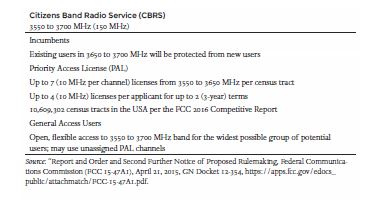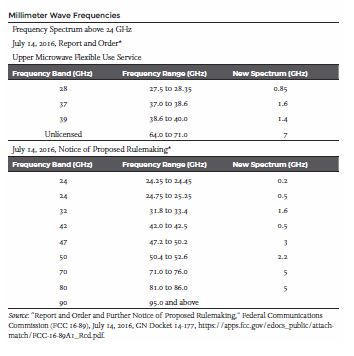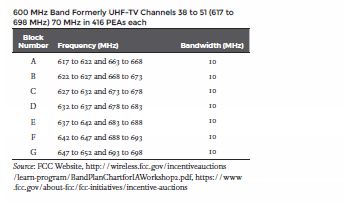Topic 9- Government Regulation
Since frequency spectrum is allocated by the FCC on behalf of the federal government to existing and would-be wireless carriers, the FCC is obliged to serve as the lead government agency to regulate the commercial mobile services or wireless industry. Numerous federal laws and actions foster the creation, development, nurturing, and protection of the commercial mobile services sector, including arrangements to increase frequency spectrum availability.1 As such, federal regulatory oversight is an ongoing critical aspect of the wireless industry structure.
For instance, a provision in Section 704 of the Telecommunications Act of 1996 restricts local jurisdictions from prohibiting or having the effect to prohibit the provision of personal wireless services, unreasonably discriminating among providers of functionally equivalent services, and “regulating the placement, construction, and modification of wireless facilities on the basis of the environmental effects of radio frequency emissions to the extent that such facilities comply with” federal regulations.2
In Section 6409(a) of the Middle-Class Tax Relief and Job Creation Act of 2012, local governments are mandated not to deny but instead to approve permit requests for collocations on existing wireless towers, as long as the physical dimensions of the existing tower are not substantially increased.3 These and other actions by the federal government further national siting policy for wireless facilities.
During his term as chairman of the FCC (from January 2016 to January 2020), Ajai Pai oversaw extensive work on telecommunications siting policy as was the case with local and state agencies, as well, 4 considering the numerous undertakings of the FCC, the US Congress, and state legislatures.5 This was precipitated in December 2016 by a petition by Mobilitie to the FCC aimed at accelerating wireless/wireline broadband deployment by removing barriers to infrastructure investment 6 that became FCC Notices of Proposed Rulemaking (NPRMs) and Notices of Inquirie (NOIs) in March 2017. 7 The petition and follow-up activity was a result of treatment being received by wireless carriers from jurisdictions stressed over development applications for microcell sites (‘small cells’).
Upon becoming FCC chairman, Pai immediately called for the development of an FCC Broadband Deployment Advisory Committee (BDAC). 8 Working committees of the BDAC were formed of industry leaders to investigate and develop a basis to streamline regulations. After extensive work by the BDAC committees and sub-committees over an eighteen-month period, three FCC Reports & Orders (R&Os) & Declaratory Rulings were promulgated to speed deployment of next-gen wireless infrastructure regarding 1.) local moratoriums, 2.) to institute a one-touch make-ready rule for pole attachments in PROW to speed access to utility poles, and 3.) to set standards for small cell applications specifying limits on the authority of local governments. 9
As a result of further inquiry initiated by the Wireless Industry Association (WIA), the FCC issued a clarification of previous rules on October 27, 2020, known as “Implementation of State/Local Governments’ Obligation to Approve Certain Wireless Facility Mod Requests under Section 6409(a) of the Spectrum Act of 2012” to provide for a streamlined review of requests to add limited space at the bottom of existing towers for backup power, low-latency computing, and for multiple providers to be housed at one site (within 30’ of the existing site) not to be considered a ‘substantial change.’ Finally, existing structures no longer required existing wireless antennas to be considered wireless structures for collocation purposes. 10
In another notable action, a US District Court on September 17, 2020, ruled in favor of CTIA, finding that Berkeley, CA’s ordinance be preempted by a 2019 FCC RF update that found “even if certified or otherwise authorized devices produce RF exposure levels in excess of Commission limits under normal use, such exposure would still be well below levels considered to be dangerous, and therefore phones legally sold in the United States pose no health risks.” 11
Over 30 states have passed legislation to modernize and streamline rules for small cells in the public right of way … for responsible, sustainable, and expedited deployment. 12
These changes in regulatory oversight and their impact on wireless communications will be addressed in relation to the content of this text as appropriate.



